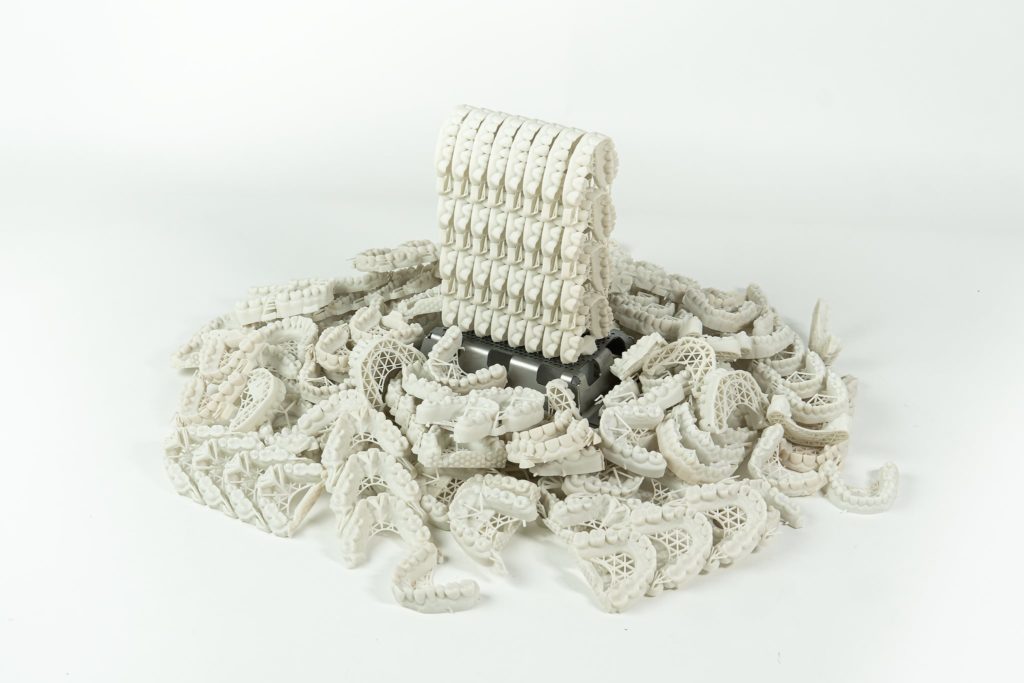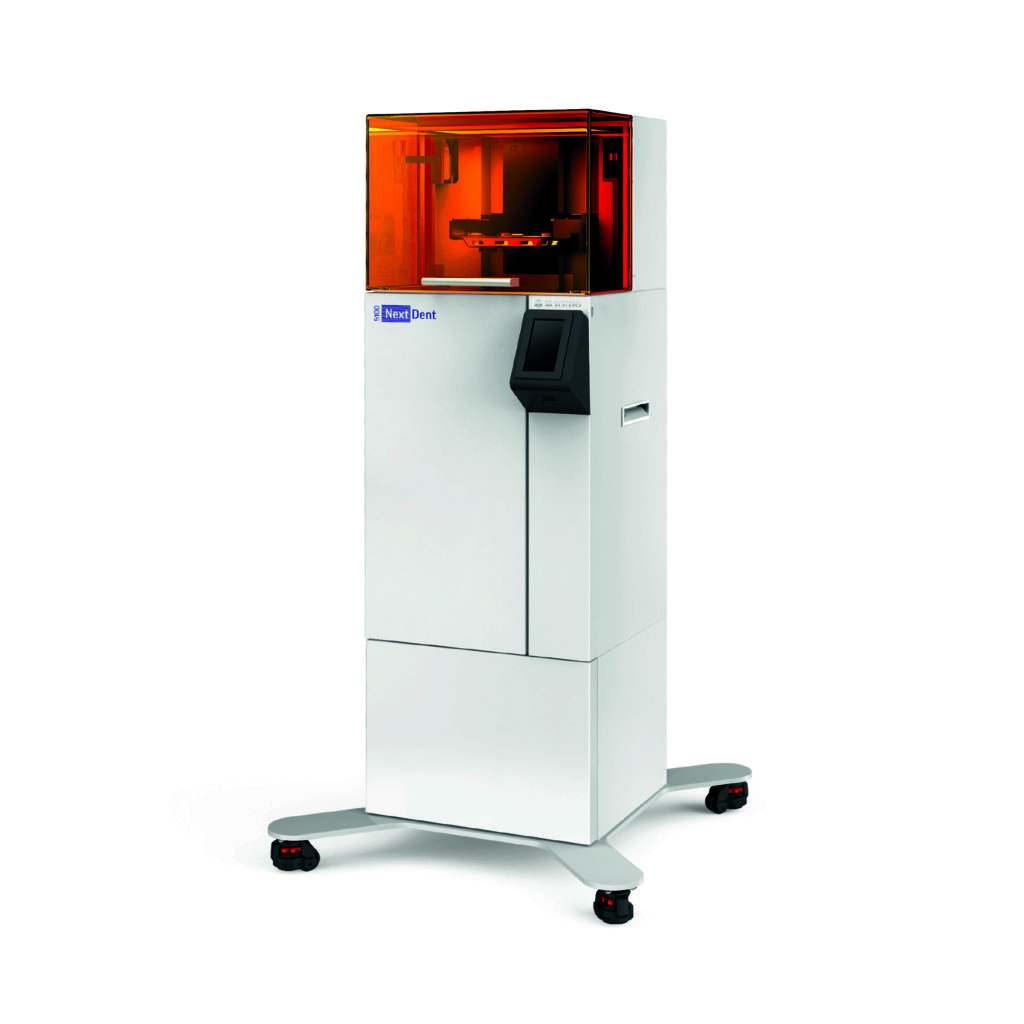Despite the fact that its most recent CEO, Vyomesh Joshi, has headed for retirement, 3D Systems is continuing in his vision for vertically integrated industrial 3D printing. The company has announced a new solution for batch production of 3D printed orthodontic models.
Ahead of LMT Lab Day 2020, the company announced a software workflow for 3D printing up to 30 orthodontic models in a single print using its NexDent 5100 3D printer, NextDent Model 2.0 Software, and 3D Sprint software. Altogether, 3D Systems suggests that dental labs and clinics could potentially produce 120 models in just eight hours, depending on the size and geometry of the models.
The heart of the workflow is a new auto-stacking feature within 3D Systems’ 3D Sprint software, which makes it possible to automatically prepare and place dental models on the build plate with a single click. The tool includes smart nesting and proprietary support structures that are meant to result in less material use and easy-to-remove supports, while ensuring high precision. The auto-stacking feature is set to be available to NextDent 5200 users in the second quarter of this year.
Also to be presented at the Lab Day event is 3D Systems’ NextDent Denture 3D+ biocompatible denture material, which recently received U.S. Food and Drug Administration 510(k) clearance. The company claims that 3D printing a denture using this material as the base and NextDent C&B MFH for the teeth using the NextDent 5100 3D printer reduces denture fabrication expenses by 90 percent and production time by 75 percent compared to traditional methods.
None of these products would be possible without 3D Systems’ 2016 purchase of NextDent parent company Vertex Global-Holding B.V. Nor would it be possible without the commercialization of 3D Systems’ Figure 4 technology. The NextDent 5100 3D printer relies on the continuous digital light processing technology behind Figure 4, packaged for the dental industry.
All of this is part of Joshi’s plan to establish strong foundations for the company in various verticals, ensuring streamlined and effective divisions for each. The first was medical and dental, which involved building off of the existing success of 3D Systems’ Healthcare, at which point the company would extrapolate the model deployed there over to aerospace and other divisions. The modular Figure 4 system has the potential to be used across all verticals, with individual Figure 4 systems like the NextDent applicable to small operations and a complete factory solution ideal for larger production scenarios. Now that Joshi is leaving the company, we will see if his successor can take the reins and follow through on that vision.
Join the discussion of this and other 3D printing topics at 3DPrintBoard.com.
Subscribe to Our Email Newsletter
Stay up-to-date on all the latest news from the 3D printing industry and receive information and offers from third party vendors.
You May Also Like
Model No. Deploys Titan Pellet 3D Printers for Sustainable Furniture Production
Over the years, many designers have tried to create 3D printed polymer furniture. Early pioneers like Janne Kyttanen, Materialise’s MGX, and Joris Laarman have led the way with 3D printed...
3D Printing News Unpeeled: Recycling PLA, More Efficient Atomizing
Filamentive hopes to recycle your PLA if you’re in the UK and order over £500 worth of filament. Their partner 3D Printing Waste (3DPW) will turn the PLA into injection...
Lighting the Way with Potato Starch: Sustainable Polish ECO Lamps Use 3D Printing
Lighting that meets the essence of nature: this is the reality brought to life by ECO Lamps, which introduces a fresh perspective to sustainable lighting design using potato starch. These...
3D Printing News Unpeeled: 3D Printed Construction Standard, Sand Wall & Self Heating Microfluidics
ISO/ASTM Standard 52939:2023 has been released and it sets standards for QA for 3D Printed polymer, composite and cement buildings. This is most welcome since 3D printed construction is a...



































